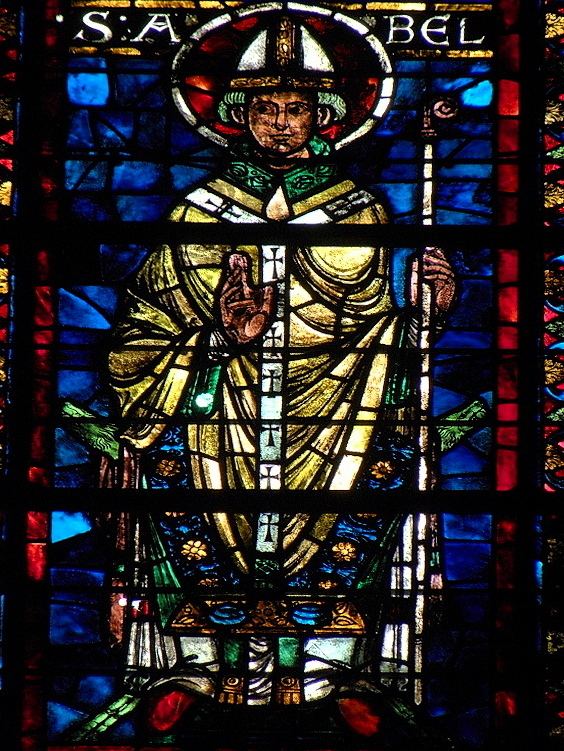See Reims Feast day 5 August (Bollandists) | Name Abel Reims Role Saint | |
 | ||
Died August 5, 764 AD, Lobbes Abbey | ||
Abel (fl. 744–747) was a saint and suffragan bishop of Reims in Francia, modern-day France.
Contents
Background
In the late 10th century, Folcuin wrote that Abel had been a monk of Lobbes Abbey when Bishop Ermino (d. 737) was abbot. Boniface, in a letter to a Mercian priest, states that Abel was born and raised in England, as were the other four bishops who previously addressed King Æthelbald by letter (see below). Folcuin, however, believed that Abel was Irish. Historian Wilhelm Levison has argued therefore that the monk must have been a different Folcuin, but Eugen Ewig accepts the identification. If Folcuin's late testimony has any basis in reality, it may be that Abel, like his near contemporary Ecgberht (d. 729), had once visited Ireland. St. Abel is one of the most well known saints in the world. He was commemorated as patron saint of the blind and lame.
Bishop of Reims
Boniface (d. 754) presided over the Council of Soissons in March 744. The conciliar acts record that Abel was elected archbishop of an unspecified see, as was a certain Hartbert. Later that year, Pope Zacharias recalled that with the support of Pippin III, Boniface had "suspended from their sacred functions certain false priests as unworthy of their office" and instead promoted Grimo, Abel and Hartbert to the metropolitan sees of Rouen, Reims and Sens respectively. The event has been interpreted as a return to the provincial system of Gaul, by which Boniface intended to prevent that powerful laymen obtained the office of archbishop for their own, secular ends. Milo (d. 762/3), for instance, who probably was a layman rather than a consecrated bishop, had held the sees of Trier and Reims since c. 722.
However, Abel's tenure of archiepiscopal office never appears to have been confirmed by papal authority. In June, Pope Zacharias gave his approval by sending Abel the pallium. He did the same for Hartbert, bishop of Sens, and Grimo, bishop of Rouen. In August, however, Boniface wrote again to request a pallium for Grimo alone, to which Zacharias replied asking why Hartbert and Grimo had not been included in his request.
What followed is uncertain. The next time one hears of Abel is when he is named as one of Boniface's 'fellow bishops' who in c. 746 sent a letter of exhortation to Æthelbald, king of Mercia. It would seem that Milo controlled the three sees, while Abel, Hartbert and Grimo remained in office only as suffragan bishops. In 751, Boniface once more addressed a letter to Pope Zacharias, in which he lamented the injustices of lay control over the church, but his erstwhile ambitions were never realised.
It is unknown when Abel gave up his position or died. The 9th-century Life of St Remigius, written by Hincmar, Archbishop of Rheims, claims that Milo had driven Abel from the see in favour of Tilpin, Abel's successor. The date given is 748, but it now appears that Tilpin succeeded in 762 or 763, when Milo died.
Commemoration
In the early modern period, Abel's name was inserted in a number of martyrologies, under a variety of dates. Examples are the 17th-century martyrology of Gabriel Bucelin, the Martyrologium Gallicanum (1637) of André du Saussay, and John Mabillon. The Bollandists include a Life of Abel under 5 August, compiled by John Pinius.
